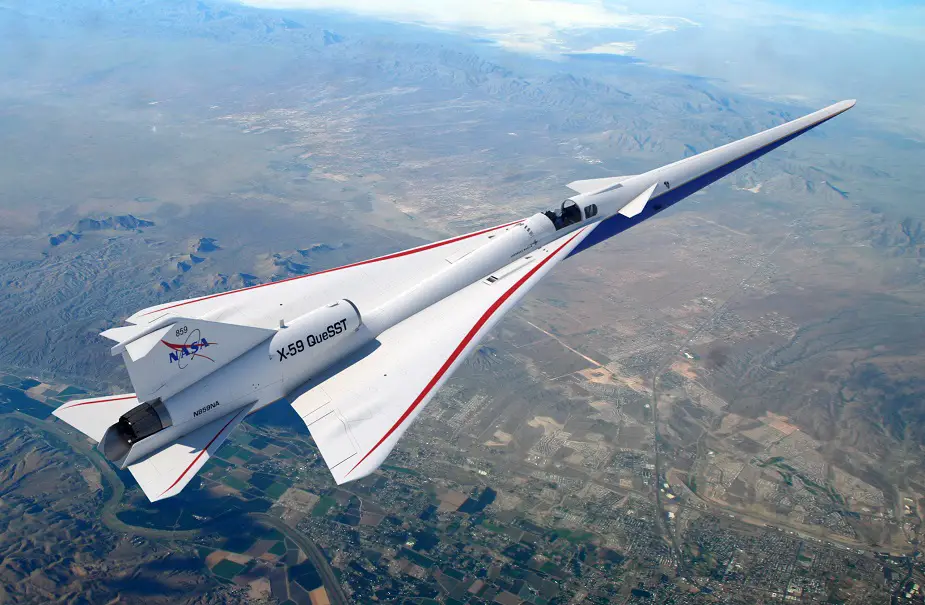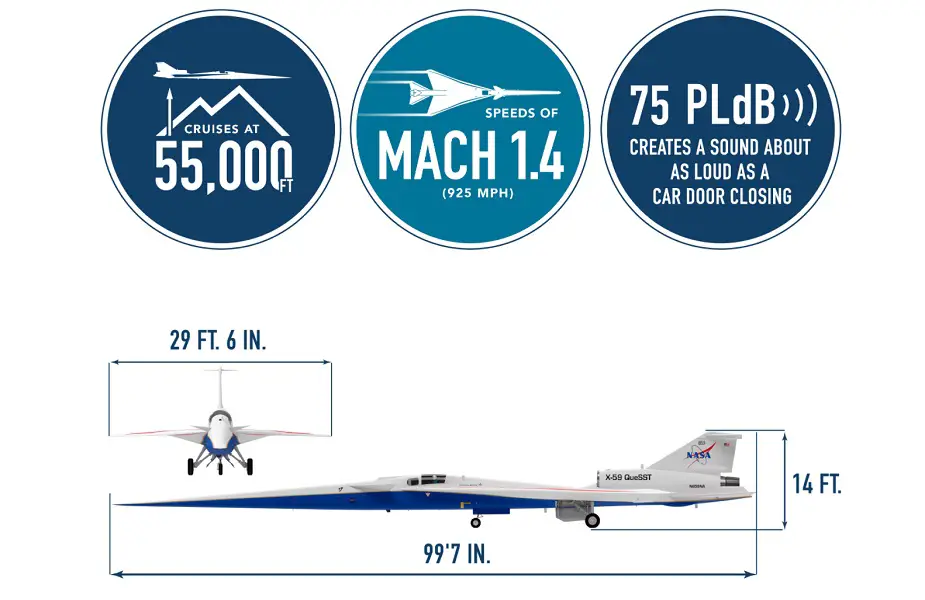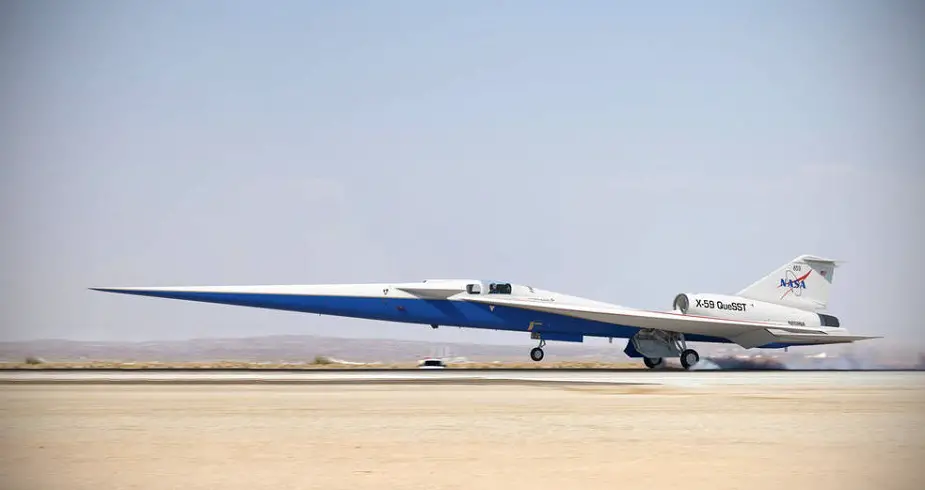In partnership with NASA, the Lockheed Martin Skunk Works team is solving one of the most persistent challenges of supersonic flight – the sonic boom. X-59 QueSST (Quiet SuperSonic Technology) will be used to collect community response data on the acceptability of a quiet sonic boom generated by the unique design of the aircraft. The data will help NASA provide regulators with the information needed to establish an acceptable commercial supersonic noise standard to lift the ban on commercial supersonic travel over land. This breakthrough would open the door to an entirely new global market for aircraft manufacturers, enabling passengers to travel anywhere in the world in half the time it takes today.
Follow Air Recognition on Google News at this link

NASA’s first piloted X-plane in decades, X-59 QueSST is a research jet shaped to reduce the loudness of a sonic boom to that of a gentle thump (Picture source: Lockheed Martin)
For more than a decade, Lockheed Martin Skunk Works and NASA have partnered to solve one of the most persistent challenges of supersonic flight – the sonic boom. Lockheed Martin Skunk Works is leading the design, build and flight test of the X-59 Quiet Supersonic Technology X-plane demonstrator. The technology demonstrator will be flown over populated areas to provide U.S. and international regulators with statistically valid data required to help approve new rules that could allow quiet commercial supersonic flight over land, which could bring us one step closer to quiet supersonic travel for passengers around the globe.
 The technology demonstrator will be flown over populated areas to provide U.S. and international regulators with statistically valid data required to help approve new rules that could allow quiet commercial supersonic flight over land (Picture source: Lockheed Martin)
The technology demonstrator will be flown over populated areas to provide U.S. and international regulators with statistically valid data required to help approve new rules that could allow quiet commercial supersonic flight over land (Picture source: Lockheed Martin)
The X-59 is an experimental supersonic aircraft shaped to reduce the loudness of a sonic boom reaching the ground to that of a gentle thump. The X-plane accomplishes this by tailoring the volume and lift distribution to separate the shocks and expansions associated with supersonic flight. The resulting supersonic “heartbeat” is dramatically quieter than the disruptive N-wave boom generated by today’s supersonic aircraft. We look forward to supporting NASA in the effort to obtain the data regulators will need to make informed decisions on appropriate sonic boom levels in the quest to remove the prohibition on supersonic over land flight.
The first flight of the X-59 QueSST is planned for 2022.
 Illustration of the completed X-59 QueSST landing on a runway (Picture source: Lockheed Martin)
Illustration of the completed X-59 QueSST landing on a runway (Picture source: Lockheed Martin)
This time-lapse represents manufacturing of the X-59 Quiet SuperSonic Technology, or QueSST, aircraft from May 2019 to June 2021 and includes the merger of its main sections - the wing, tail assembly, and fuselage or forward section
















